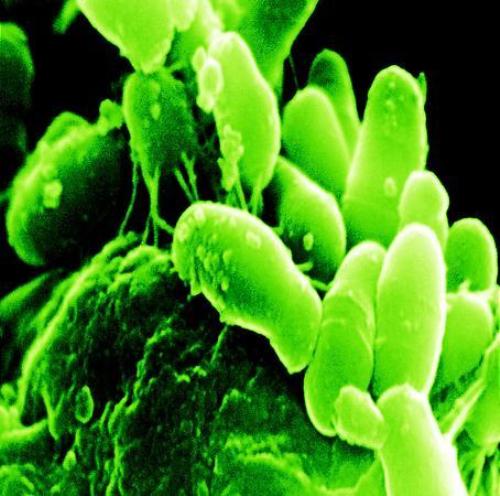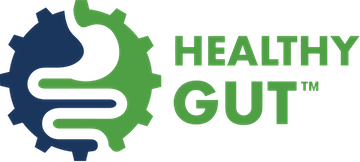SCD Probiotics – What You Really Need to Know

A few months ago I was listening to a podcast by Chris Kresser and he said something that shook my “etch-a-sketch.”
You know what I mean right?
I use that term whenever I learn something that erases everything I thought I knew and leaves behind a blank slate…
Here’s what he said (paraphrased):
“Humans have ten times more bacteria than human cells in their body. So a common saying is: we’re more bacteria than we are human.”
Crazy right? What if our bodies are just puppets to carry bacteria around?
Yeah I know – I’m coming back to earth, but it’s something to think about for a minute…
If we have 10x more bacteria growing inside us than human cells, maybe we should become better friends with them.
They might play just as big of a role in our health as food, air, and water. Some people refer to this as “tending our bacteria gardens.” It can be one of the easiest ways to feel better faster other than changing your diet.
And that’s why I put this post together about SCD Probiotics and what you really need to know.
For Starters, There Are Three KINDS of Bacteria
Each of these three types of bacteria has a different role in our body and there’s some that are more important than others.
For the sake of making it simple, they can be separated by how they interact with each other. With that said, here’s the best explanation I’ve seen about the different bacteria types:
1. Essential or Beneficial Flora (AKA the good guys): that’s the friendly bacteria we’re always talking about, like Bifidobacteria, Lactobacteria, and E-Coli.
(Yes, some strands of E-Coli can be friendly.)
2. Opportunistic Flora (AKA the bad guys): there’s around 500 various species of microbes in your gut that fall in this category. And they’re actually controlled by the beneficial flora, so they keep them in check.
They can cause problems once they overgrow… this is the “bad bacteria.”
3. Transitional Flora (AKA the drifters): these are microbes from the outside environment, the ones you take in through food and drink or just living and breathing in the environment.
They can take hold and damage our guts and even cause disease. In this case, beneficial bacteria (the good guys) usually keep those in check and prevent that from happening.
All these types have a place and a purpose, and when they start doing something other than that is when they wreak digestive havoc in our bodies.
But Probiotics Are Something Different Altogether…
Probiotics are strains of beneficial bacteria that, when we take them, support our native beneficial bacteria.
They also help control the opportunistic bacteria from getting out of control and protect us so that the transitional bacteria and pathogenic organisms can’t take hold inside our damaged guts.
But the supplemental forms that we take are “transient” and don’t stay in our bodies for very long… something like two weeks.
So they aren’t really “replacing” what we’re already missing in that sense…
Which is a bummer, because research shows that the guts of IBD patients contain 25% fewer species of bacteria (on average) than healthy people.
So we’re already at a disadvantage…
So Who Needs Probiotics?
Well, symptoms like diarrhea and constipation are signs of “Gut Dysbiosis” AKA “really screwed up gut bacteria” – which probiotics will help with.
Remember that anywhere from 50 to 80% of the dry weight of a bowel movement is dead bacteria.
And most people with digestive disease or high inflammation are going to see a benefit from taking probiotics. As I said above, we’re running on 75% of the gut bacteria a healthy person has so any little bit helps, in my opinion.
It reminds me of our friend Jay Baluk (Chrohnsboy), who has this “burnt lawn” analogy that I have to share with you.
He says (paraphrased):
“Imagine you have a big, beautiful green lawn but you have this big circle in the middle that’s burnt to a crisp and dead. Would you just let all the weeds grow so you have this beautiful lawn and in the middle you have a big giant circle with all these weeds and nasty stuff growing out of it? Or would you do what you needed to do to re-plant the seeds and let everything re-grow?”
The Bad Side of Probiotics
Before we get into the good stuff we have to touch on Bifidobacteria. It’s a hot topic in the SCD community for the reason that it can “take over” and cause health problems in some cases.
It is a beneficial bacteria, but the problem is, it’s just not a good neighbor at times. So, sometimes it can overgrow in and of itself.
So just to be on the safe side we usually recommend avoiding it in the beginning of the healing journey, but later on it can really help…
Now onto the important part – how to get started using them.
How to Start Using Probiotics… the Right Way
Fermented food has been used for tens of thousands of years and getting Probiotics from naturally fermented foods is going to be the best bet long term…
That’s why I think Elaine was so emphatic about using SCD yogurt if you’re starting SCD. It really can change lives and heal people fast, but it has its own draw backs.
Fermenting SCD Yogurt for 24-32 hours does remove 99% of the lactose sugars, BUT… it still contains the casein protein.
And we’ve seen too many people start SCD eating the yogurt, DCCC, aged cheeses, etc. and never start feeling better…but those same people try cutting it out for a little while and notice an immediate improvement.
The best non-dairy option would be making your own sauerkraut. But if that’s not an option…
So our current thinking on it is: once you’ve been on the diet about 30 days and you’re starting to feel better, go ahead and test SCD legal fermented yogurt slowly…
In the meantime – probiotics can help you heal start healing in the absence of these other sources.
Here’s Two Steps to Get Started Today:
Step 1) Your safest bet to start healing is Lactobacillus acidophilus. GI Pro “Scdophilus” is great because it’s non-dairy, SCD legal, very high quality, and has a long shelf life.
You can find out more about it here: http://www.giprohealth.com/scdophilusnext.aspx
Step 2) Start low and work your way up. For example, if you go with “Scdophilus” from GI Pro Health, they have a 3 Billion CFU pill and a 10 Billion CFU pill. So you could start by taking 1 of their 3 Billion CFU pills per day and work up slowly to 30 to 40 billion CFU’s per day by moving up to the 10 Billion CFU pills.
(For best results: take them 30 minutes before breakfast right when you wake up or atleast two hours after a meal right before bed. That’s the best odds to get live cultures past the stomach pH and into the intestines.)
Taking Probiotics Long Term…
Those two steps will get us started, but it’s a long road we’re headed down.
In Dr. Natasha Campbell-McBride’s book, Gut and Psychology Syndrome, she states:
“A good probiotic should have as many different species of beneficial bacteria as possible. A human gut contains hundreds of different species of bacteria. We should try and get as close to that as we can.”
She goes on to say, “Making sure there are strains from different groups of probiotic bacteria is more beneficial than just one group.”
So if you’ve been cruising along for a while taking 30-40 Billion CFU’s of Lactobacillus Acidophilus and you’re feeling kind of “stuck,” consider testing a multi-strain probiotic.
It might be the next missing piece of your healing journey…
The other obvious choice here is to start testing fermented foods like Sauerkraut (Wild Fermentation is a great book to get started) OR introduce SCD 24-Hour Yogurt.
After you start feeling better on SCD + Probiotics, give SCD legal yogurt a shot…
Either one is just another step along the way.
All I do know is: Gut Bacteria is like outer space – there’s still a whole lot we don’t know about it.
In good health,
Did You Like this Article?
Subscribe to our newsletter to receive email notifications, some ways to find relief, and next steps.
